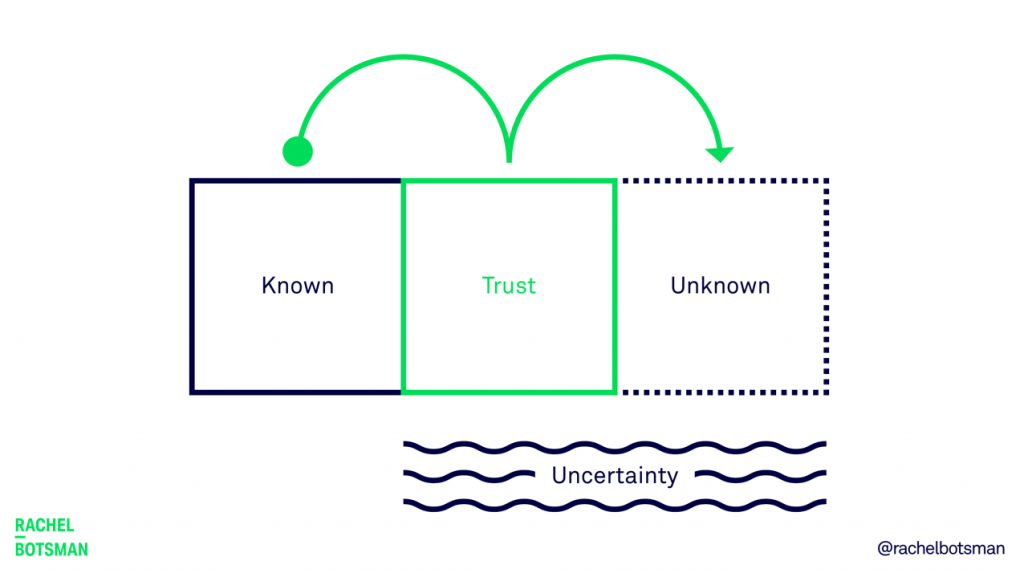“The way to build more trust is to be more transparent”. This statement was taken from a slide in Rachel Botsman’s keynote speech The Currency Of Trust (Rachel Botsman, author ‘Who Can You Trust?’) | DLD 2019.
The statement as she describes it is one of her pet peeves i.e. the idea that transparency equals trust. For those who aren’t familiar with Botsman, she is a trust expert. She defines trust as “A confident relationship to the unknown” – if you watch her keynote there is a lovely diagram where trust is the bridge between the known and the unknown – what she terms as the ‘Trust Leap’. Botsman goes on to argue that if you need to be transparent you’ve already broken the trust – transparency doesn’t fix trust. She says transparent relationships and transparent cultures are low trust relationships and low trust cultures therefore transparency does not produce more trust. Now I’m not here to argue against the ‘Trust Expert’, in fact, I’d urge anyone reading this to do themselves a favour and take 20 minutes and watch her DLD keynote or Ted Talk – both are equally relevant to anyone in financial services. What Botsman does say and where what we do is relevant to trust, is that transparency is a great tool for holding people accountable or getting information disclosure that we really need.

Because financial services are a complex sector we’ve had to find ways for our clients to simplify content, so it’s easier for end-users to understand the language associated with categories, products, services, and investments. Infographic and explainer videos are effective ‘Transparency Tools’ that help describe intricate content. Making the complex simple, creating identifiable symbols and icons with a logical narrative, and developing a design system with a hierarchy of communication is at the very heart of effective branding design. It’s at the intersection where communication and correlation empowers and engages user experience. On the flip side, when end users don’t understand complex content it leaves them feeling confused, frightened, and sometimes angry. From a behavioural point of view, disenchanted, defensive, and disengaged – the very emotions and behaviours that are currently challenging the sector. Simple ‘transparency tools’ like infographics and explainer videos can go a long way to bridging the trust gap.
For Botsman her passion and what drives her work is to give people a very clear and precise language to talk about trust, and a framework to better understand it. Similarly, our philosophy ‘Design for change’ drives our passion for financial services brand and marketing. The overlap between Botsman’s concepts like the ‘Trust Leap’ and ‘Trust Attributes’ and how we approach financial services brand and marketing is uncanny. The ‘Trust Leap’ talks about trusting the idea and trusting the platform. While Trust Attributes align to design thinking methodologies like empathy, honesty, and insight and design principles like consistency and clarity. It leads to me to believe we’re in the business of helping our clients and their clients negotiate the ‘Trust Leap’, where trust enables change and innovation – whether that’s being transparent or not I’ll let you be the judge!

Botsman, Rachel. “The Currency of Trust (Rachel Botsman, author ‘Who can you Trust?’) DLD 2019 – www.strategiesforinfluence.com/rachel-botsman-expert-on-trust-and-technology




